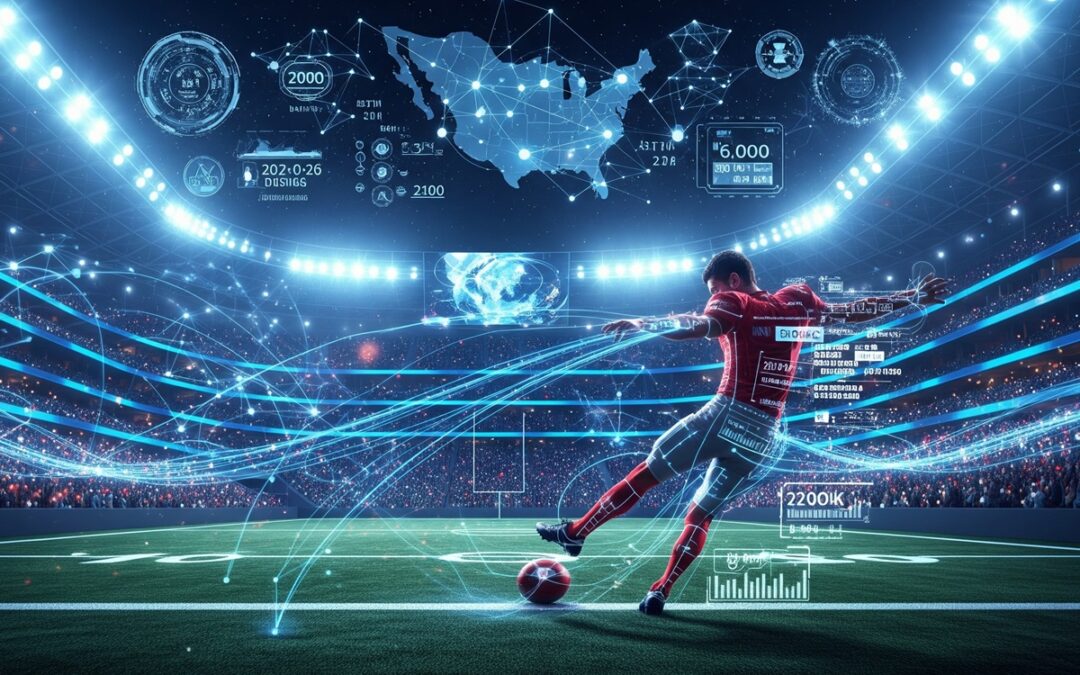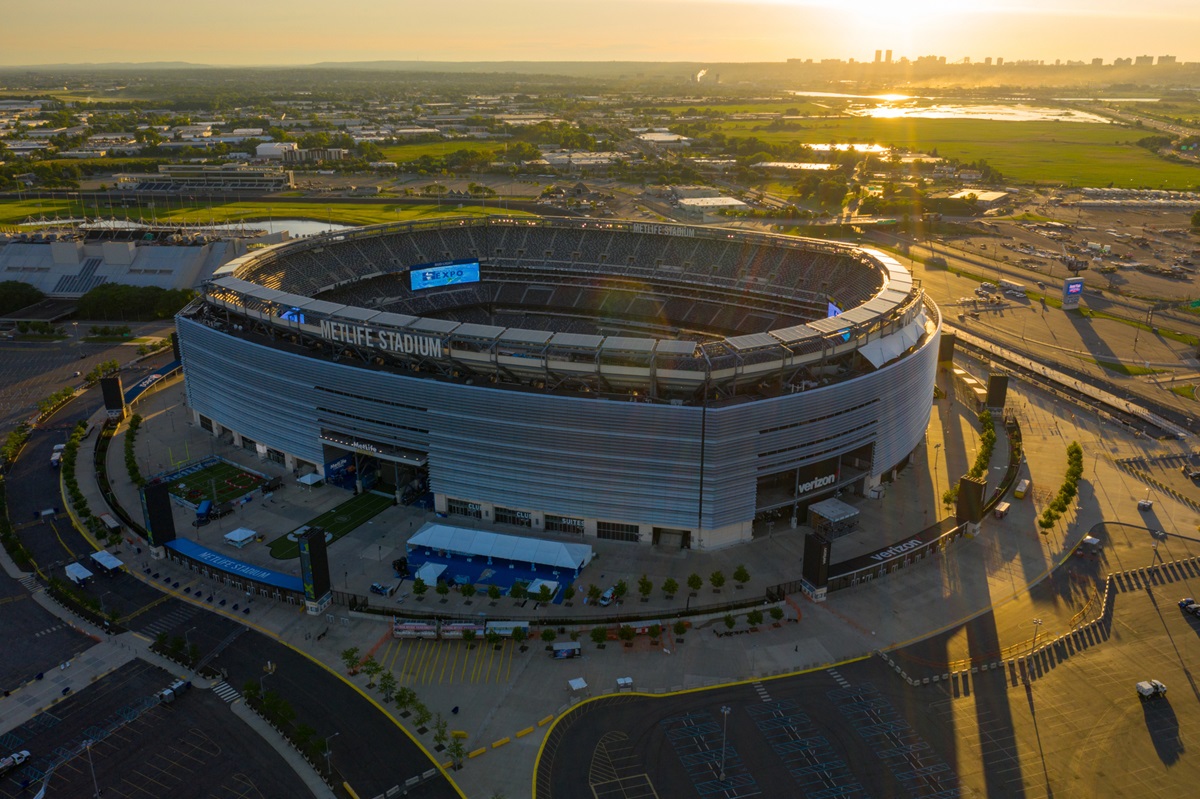For decades, soccer was all about gut instinct. A mix of talent, intuition, and grit. Victories came from a coach’s sixth sense, the vision of the number 10, or the inspiration of a goalkeeper who turned into a giant between the posts. But something has changed. Today, as the ball rolls, millions of data points flow silently, influencing — almost invisibly — every decision, every pass, every substitution.
The truth is, modern soccer can no longer be understood without algorithms, advanced metrics, and colorful graphics that explain the game like never before. And the FIFA World Cup 2026 will be no exception. With 48 teams, three host countries, and an unprecedented level of logistical complexity, the tournament promises to be the largest science experiment ever applied to sport.
The Invisible Match: What the Numbers See That We Don’t
Picture this: 22 players running across a pitch, each wearing sensor-equipped vests, a ball sending GPS signals, and ultra-high-definition cameras capturing every movement… 25 times per second. As the crowd roars, in a room next door, a team of analysts watches screens filled with dots, heat maps, and rising and falling curves.
A single match can generate over three million data points. Yes, three million. The Premier League, LaLiga, and other top competitions already deal with this every week. The pitch is no longer just grass and white lines; it’s also a high-precision information network where every stride leaves a digital footprint.
Real-Time Tactics: When Data Outperforms the Coach’s Eye
In the past, coaches had to wait until halftime to make adjustments. Today, thanks to platforms like Coach Paint Live or KINEXON, they can receive real-time alerts. For instance, if a right-back is slow to track back or if the opposing team keeps repeating an offensive pattern that creates openings. There’s no need to wait for post-match analysis anymore — data whispers in your ear while the clock ticks.
During a World Cup, where everything is decided in just 90 minutes, that’s pure gold. An analyst might notice the center-backs falling into a positional trap, and within minutes, the coaching staff can make adjustments. It’s like playing chess… but with the help of a supercomputer.
Related content: Nike vs. Adidas vs. Puma: The Battle for Supremacy at the 2026 World Cup
The Athlete’s Body, Decoded
Behind a soccer’s performance lies more than just skill or fitness. There are sleep cycles, stress responses, physiological signals that no human eye could ever catch. Big Data has turned this into pure science. Physical trainers now know exactly how many sprints a winger has made in the last 20 minutes and whether their recovery pattern indicates an injury risk.
Germany was a pioneer in this. In 2014, they reduced their average possession time to 1.1 seconds thanks to data analysis. It wasn’t magic — it was a decision backed by millions of lines of code. Today, each player follows a personalized training program, a roadmap that tracks effort, fatigue, and potential.
Even more fascinating: emotional states are beginning to be measured. How mentally rested is a striker ahead of a semifinal? Can they handle the pressure of a decisive penalty? Everything counts.
Scouting 2.0: Finding Talent in a Sea of Data
For years, clubs relied on the instinct of their scouts. But the market is changing. Today, the real hidden gem might be uncovered by an algorithm. Clubs like Brentford, Midtjylland, or Monchi’s Sevilla have proven that it’s possible to build a competitive team without millions… but with data.
Thanks to platforms like Wyscout and StatsBomb, clubs can filter thousands of players by very specific metrics: effective high pressing, successful through passes, or defensive impact in zone 14. Players that no one notices… except the data.
Even stars like Kevin De Bruyne have used their own metrics to negotiate contracts. Who needs an agent when the numbers speak for themselves?
World Cup 2026: The Most Analyzed Tournament in History
This World Cup will be different. Not just because of its size or format, but because science will be everywhere. National teams will use predictive models to plan training sessions, assess physical and mental readiness, and anticipate opponents’ patterns.
Example? In 2014, Germany studied players like Cristiano Ronaldo and French goalkeepers down to the smallest detail to design their defensive strategies. In 2026, that will be taken to the next level. Artificial intelligence will allow teams to simulate specific scenarios — a penalty shootout, a counterattack in the 88th minute, or extra time with 10 men — and make decisions based on real probabilities, not guesswork.
And most likely, the teams that ignore these resources… won’t make it past the group stage.
Soccer for All — or Only for Those Who Can Afford It?
But it’s not all excitement. Some uncomfortable questions remain. What about the national teams or clubs that can’t access these technologies? Are we witnessing the birth of a new gap — between the rich and poor, between those with a data science department and those still relying on the coach’s notebook?
Then there’s the matter of privacy. How ethical is it to collect such intimate data from players? Can a club use that information during contract negotiations? And what if it gets leaked?
The thrill of the game shouldn’t be buried under charts. Data is powerful, yes. But it must be handled with humanity and responsibility.
Glory Isn’t Improvised — It’s Calculated
Soccer today is no longer played only with the feet. It’s played with algorithms, sensors, artificial intelligence… and yes, with passion. Because in the end, data doesn’t score goals — but it helps us understand how to.
The FIFA World Cup 2026 will be the first great showcase of “total soccer” in analytical terms. The winning teams will be those that know how to blend emotion with precision, intuition with statistics, heart with data.
And while you’re sitting in the stands or watching from home, remember: behind that last-minute goal, there were probably millions of data points that made it possible — even if you didn’t see them.







